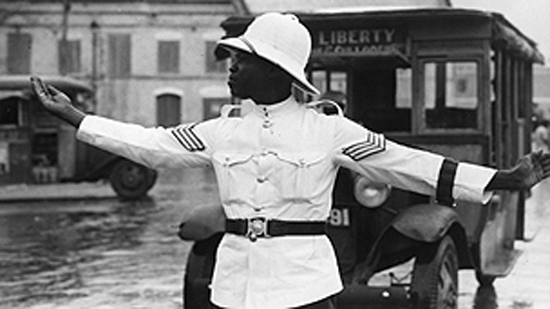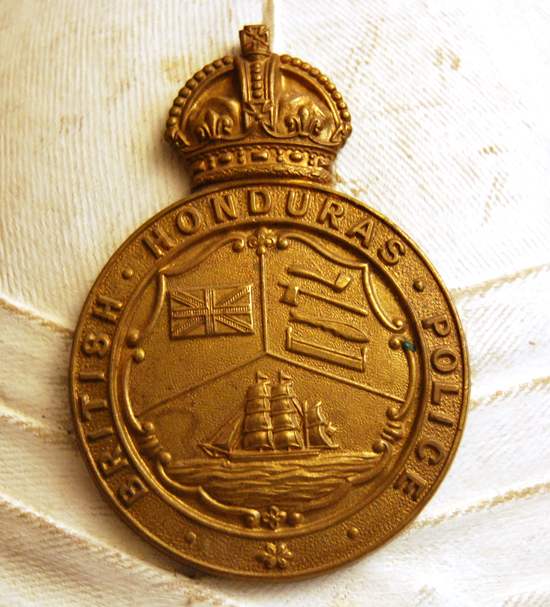The “sun never set on the British Empire” the saying went, and it is also true that the sun shined brightly on the British colonies in the Caribbean. Even as the Wolseley helmet faded from use as true “military” headdress it lived on in British colonies and post-colonies in the Caribbean and South America.
Barbados
Barbados was colonized by the English in the early 17th century and retained uninterrupted English and later British governance; becoming the only Caribbean island that did not change hands during the colonial period. The main Police Force in Barbados was established in 1835, however the prefix “Royal” was only added to the title of the Police Force in February 1966 due to a visit by Queen Elizabeth II.
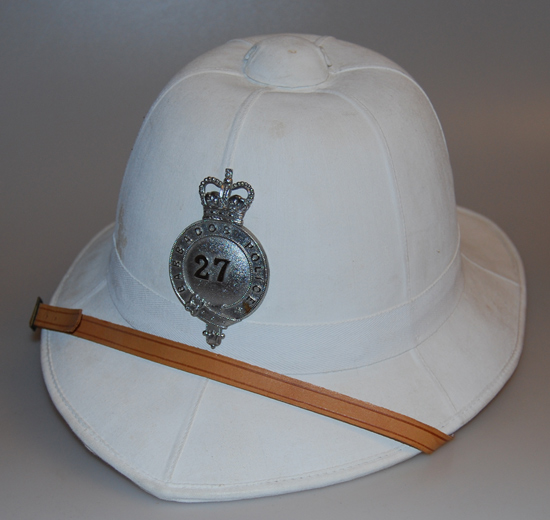
A 1990s period Barbados Police Wolseley with badge featuring the Queen’s Crown (Collection of the Author)
Today the Wolseley helmet is still very much a part of the ceremonial uniform and it features a badge with the Queen’s crown.
British Honduras
The nation of Belize was formerly the colony known as British Honduras. The land was originally colonized by the Spanish but British settlers were granted land in exchange for an end of piracy. It was not recognized as an English or later British colony for fear of provoking the Spanish.
However, by the 19th century the British sought greater control over the settlers, threatening to suspend the Public Meeting unless it observed the government’s instructions to eliminate slavery. It was declared a British Crown Colony in 1862 subordinate to Jamaica, and named it British Honduras.
The Belize Police Department is descended from the British Honduras Constabulary, which was established in 1886. Constabulary personnel initially numbered 141 and were recruited in Barbados because local men showed no interest in enlisting. The government assigned the early police the task of preserving law and order in the colony. The Constabulary was at first a paramilitary force, but in 1902, it was made into a civil police force.
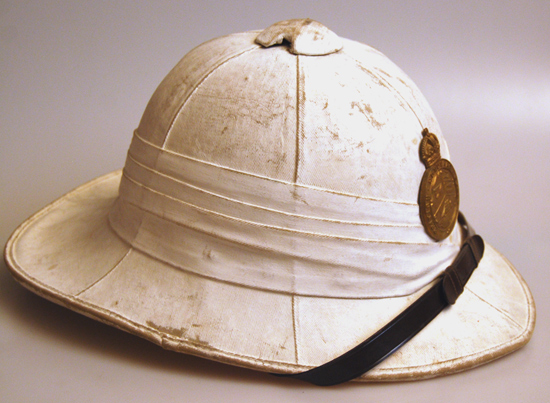
A World War II era Wolseley with three fold pugaree. This helmet had been whitened for use by the British Honduras Police following the war. It features a British Honduras Police badge with the King’s Crown (Author’s Collection)
The constabulary was reorganized after World War I, when soldiers returning from service abroad – as well as several Barbadians and Jamaicans – joined the force. The force was reorganized again in 1957.
During the colonial period, expatriate officers filled all senior posts in the police, but with self-government and then independence more Belizeans assumed positions of authority. The official name of the force was changed to the Belize Police Force in 1973.
World War II surplus Wolseley helmets were supplied to the British Honduras police, and these were used until independence. The Wolseley helmet is not currently used in Belize.
British Guiana Militia
The independent nation of Guyana was first “discovered” by the English explorer Sir Walter Raleigh, but the Dutch were actually the first to settle the region. Later, during the French Revolutionary Wars of the late 18th century, when the Netherlands were occupied by the French, and Great Britain and France were at war, Britain took over the colony in 1796. A British expeditionary force was dispatched from its colony of Barbados to seize the colonies from the French-dominated Batavian Republic. The colonies surrendered without a struggle.
In 1802 Britain returned the colonies to the Batavian Republic under the terms of the Treaty of Amiens. But, after resuming hostilities with France in the Napoleonic Wars in 1803, Britain seized the colonies again less than a year later. The three colonies were officially ceded to the United Kingdom in the Anglo-Dutch Treaty of 1814. The UK continued separate administration of the individual colonies until 1822, when the administration of Essequibo and Demerara was combined. In 1831, the administration Essequibo-Demerara and Berbice was combined, and the united colony became known as British Guiana.
The British Guiana Militia was constituted in 1891 and consisted of a machine-gun company and infantry companies. Equipped with modern arms and trained on the lines of the Territorial Army, it was under the command of the Inspector-General of the Police and had its own permanent military staff.
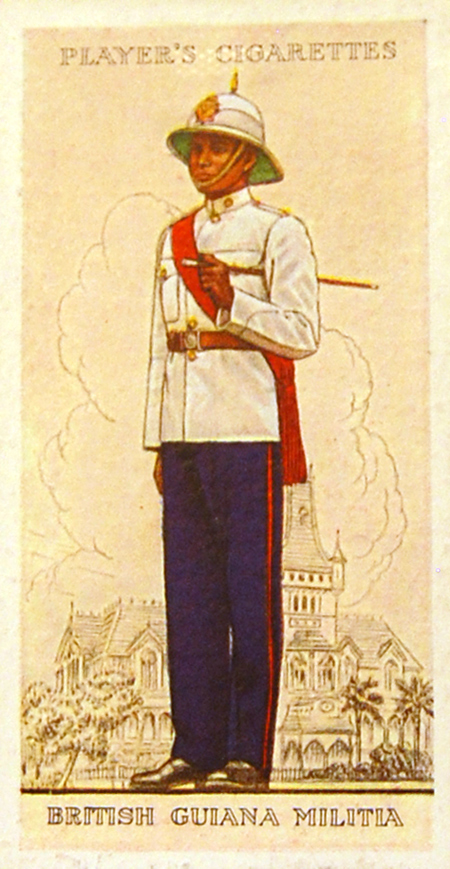
This circa 1938 tobacco card shows a Company Sergeant-Major of the Militia – he is wearing a British Wolseley, which was based on the pattern worn by the Royal Marines. It featured a spike and helmet plate to the British Guiana Militia (Collection of the Author)
Peter Suciu

